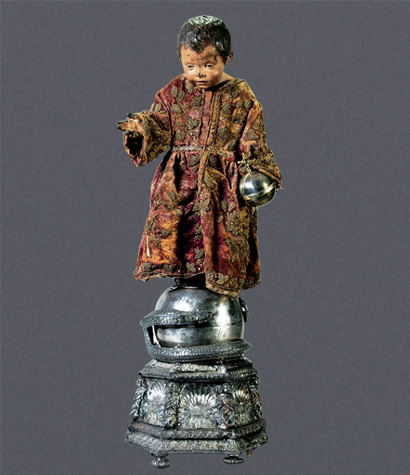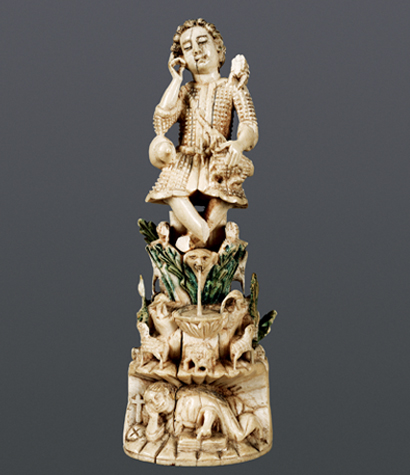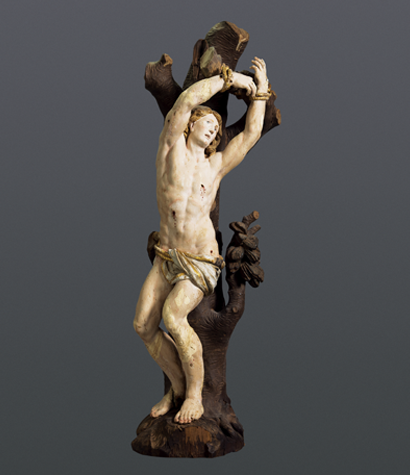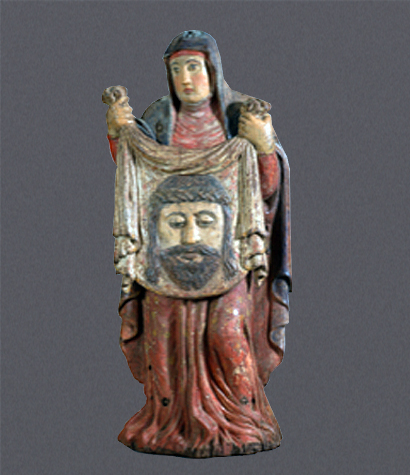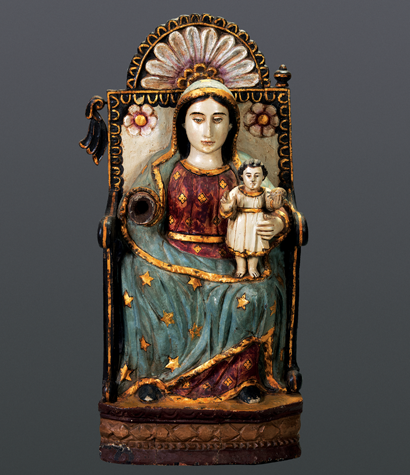
This imposing marble oratory decoration depicting the Holy Trinity, from a chapel in the Santa Monica Convent cloisters, is justifiably one of the Museum’s highlights. Intricately carved in high relief, and lavishly decorated, it reveals Mannerist/Late Renaissance as well as Baroque elements.
The Holy Trinity is shown surrounded by thick clouds indicating their celestial setting, symbols of the Passion (pillar, cross, scourge and three nails), and angels which display Mannerist features in their elegant, elongated bodies. Three figures are shown – the God the Father, a grieving old man cradling the already crucified Son, and the Dove of the Holy Spirit. The sculpture records the moment, forty days after his Crucifixion, of Jesus’s Ascension into heaven when he is received by the clouds (Acts, 1: 9-11). It combines the Ascension with the time before the Son’s entombment. This particular representation, with God occupying the position of Mother Mary in the traditional pietà, as in Michelangelo’s famous sculpture, was prohibited by the Council of Trent (which ended in 1563), since it humanized the divine instead of emphasizing God’s mystery and transcendence. However, it did not immediately disappear from altars, especially overseas ones.
The marble relief with its curved top is distinctly Italian in appearance, as seen in the position and the richness of the drapery, the elegance of the limbs, as well as in the maternal attitude of the Father, wearing a closed crown instead of being enthroned, and lightly clasping his Son’s hand in his own. Also unusual in this kind of work of art is the inclusion of the orb, symbol of sovereignty, a Baroque touch, which supports one of the Son’s feet. The narrow loincloth with its knot at front seems to indicate the piece’s European origin as it lacks the finely worked details of such garments found in Indo-Portuguese works. Visible on the Son’s head is the Crown of Thorns; his body shows signs of his Crucifixion, with holes where the nails pierced him. The Holy Dove, with its outspread wings, is rather like an eagle, and seen perched on God’s shoulder. The central composition, with its radiating halo, unites all three aspects of godhead: Father, Son and Holy Spirit.
NOTES
The marble decoration is from a chapel in the Santa Monica Convent cloisters, as recorded in the exhibition catalogue Arte Sacra na Sé Catedral de Goa e Basílica do Bom Jesus [Goa], 11 January 1960, p. 3.
PUBLICATIONS
Museum of Christian Art, Convent of Santa Monica, Goa, India, Calouste Gulbenkian Foundation, Lisbon, 2011.

